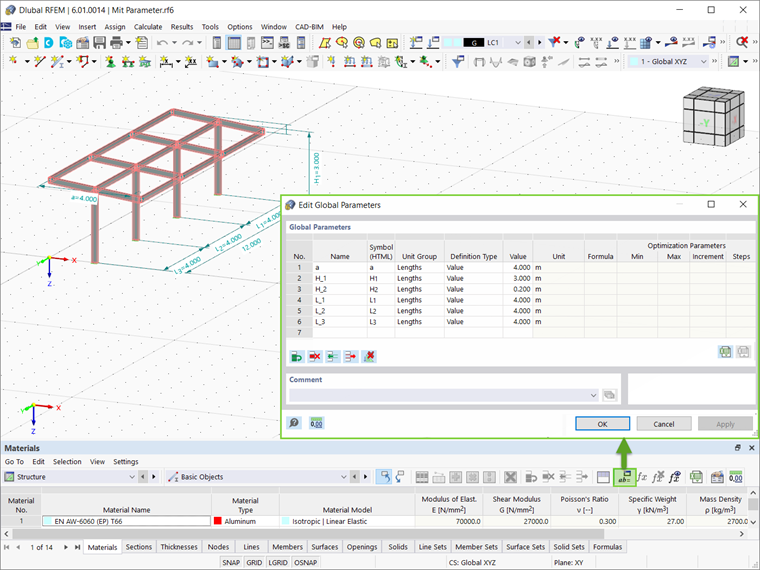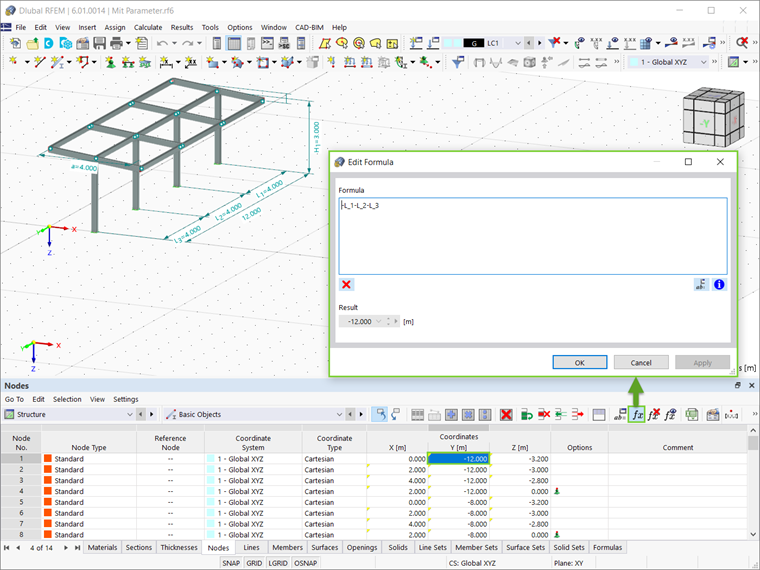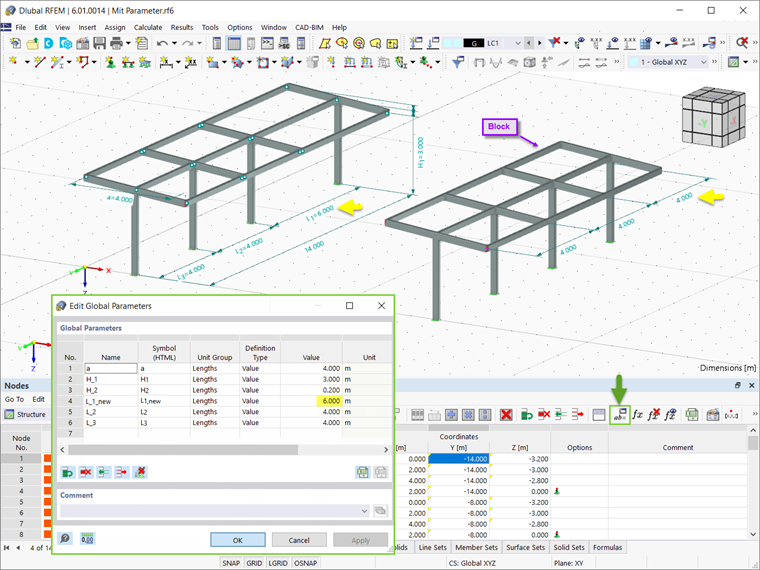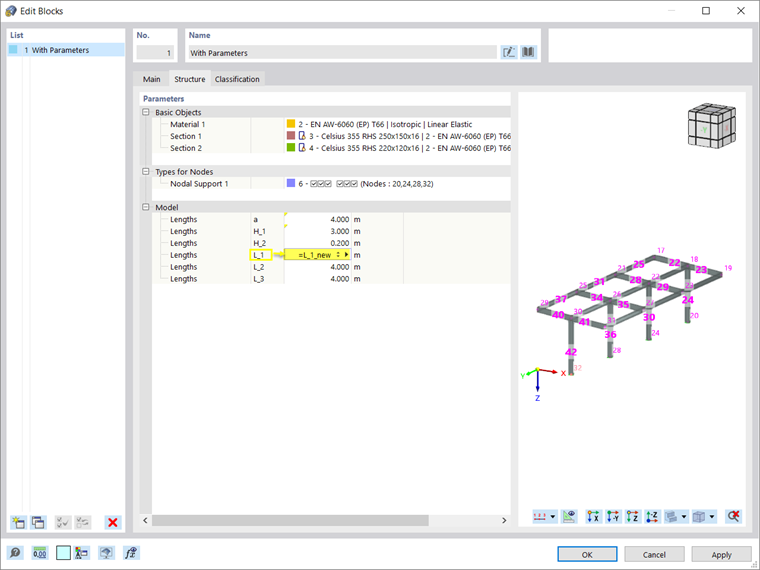The difference between non-parameterized and parameterized models is that in the latter, the structure depends on certain variables (length, width, load, and so on), also called parameters. This allows entering structural and loading data, which depend on global parameters that can be listed in the Global Parameters window (Image 1).
The parameters defined in the Global Parameters window can be used in formulas to determine numeric values in terms of the structural and loading data of the model. These formulas can be edited via the Formula Editor, as shown in Image 2.
If a certain parameter is changed in the parameters list, the numeric results of all formulas using this parameter are adjusted automatically. For example, parameter L1 in Image 2 is included in the formula that determines the numeric value of the Y node coordinates. Hence, changing the value of L1 in the Global Parameters list would result in a different value of the Y node coordinate.
Saving the parameterized structure as a block means applying the same process as discussed in the Knowledge Base article "Saving Models as Blocks in RFEM 6" (File → Save as Block).
It is to be noted that when saving the structure/structural part as a block, the parameters are saved as defined up to that moment. In other words, when the block is later inserted into a RFEM file, the parameters of the block are kept as assigned values and are not related to the global parameters of the file into which the block has been inserted.
This can be shown better when inserting the block in the current file; that is, the file with the original structure that was saved as a block earlier. Since the block was saved with parameters as defined in Image 1 (L1=4m), the change of global parameters later (L1, new=6m) applies only to the original structure and not to the block itself (Image 3).
However, it is possible to relate the parameters of the inserted block to the global parameters of the file. Thus, the parameters of the block will change interactively as the global parameters of the file are changed. To do so, it is necessary to open the Edit Block window and relate the parameters as shown in Image 4.
Final Remarks
In RFEM and RSTAB, it is useful to parameterize frequently occurring components with variable dimensions. Parametric input allows entering model and load data in such a manner that they are dependent on certain variables. These variables for length, width, traffic load, and so on, are called parameters and are set up in the Global Parameters list.
Parameterized entries are an important efficiency-increasing tool. Since structural and loading data can be entered by means of formulas that depend on the defined parameters, any change of a certain parameter in the respective formula is followed by an interactive adjustment of the model in the background.



